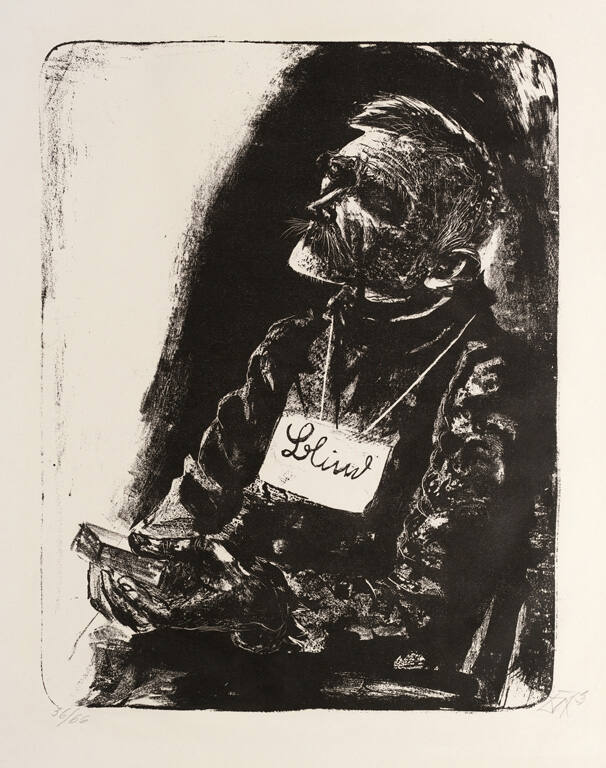
Object Details
Artist
Otto Dix
Date
1923
Medium
Lithograph
Dimensions
Image: 19 7/16 × 14 7/8 inches (49.4 × 37.8 cm)
Sheet: 25 5/8 × 19 13/16 inches (65.1 × 50.3 cm)
Credit Line
Acquired through the Professor M. H. Abrams and Ruth Abrams Purchase Fund
Object
Number
2007.056
“I had to experience how someone beside me suddenly falls over and is dead and the bullet has hit (…)
“I had to experience how someone beside me suddenly falls over and is dead and the bullet has hit him squarely. I had to experience that quite directly. I wanted it. I’m therefore not a pacifist at all—or am I? Perhaps I was an inquisitive person. I had to see all that myself. I’m such a realist, you know, that I have to see everything with my own eyes in order to confirm that it’s like that. I have to experience all the ghastly, bottomless depths of life for myself. . . .” —Otto Dix in 1962, explaining why he volunteered in WWIOtto Dix volunteered for service at the beginning of the war, serving as a machine gunner on the Western Front from 1914 to 1918. He was wounded a number of times, once almost fatally. War profoundly affected him as an individual and as an artist, and he took every opportunity, both during his active service and afterward, to document his experiences. These experiences would become the subject matter of many of his later paintings and are central to the powerful Der Krieg (The War) cycle of fifty-one prints he did after the war, based on Goya’s Los desastres de la guerra (Disasters of War) depicting the horrors of the Napoleonic invasion and the Spanish War of Independence from 1808 to 1814. (“‘The War to End All Wars’: Artists and World War I,” curated by Nancy E. Green and presented at the Johnson Museum, January 21-June 11, 2017)As a leading figure in the Neue Sachlichkeit (New Objectivity) movement, Dix created work that reflected the disenfranchisement of those struggling in postwar Germany, accentuating the ugly underbelly of its criminal population and the perverse practices of the beau monde. Blinder, done five years after the end of World War I, shows the continuing destitution of those who are severely wounded and unable to find work. With its rich chiaroscuro, this lithograph is filled with the pathos of the man’s dire situation. In his left hand he holds a matchbox, his sole source of a livelihood, his blind eyes searching hopelessly for potential buyers. (“Imprint/ In Print,” curated by Nancy E. Green with assistance from Christian Waibel ’17 and presented at the Johnson Museum August 8 – December 20, 2015)












